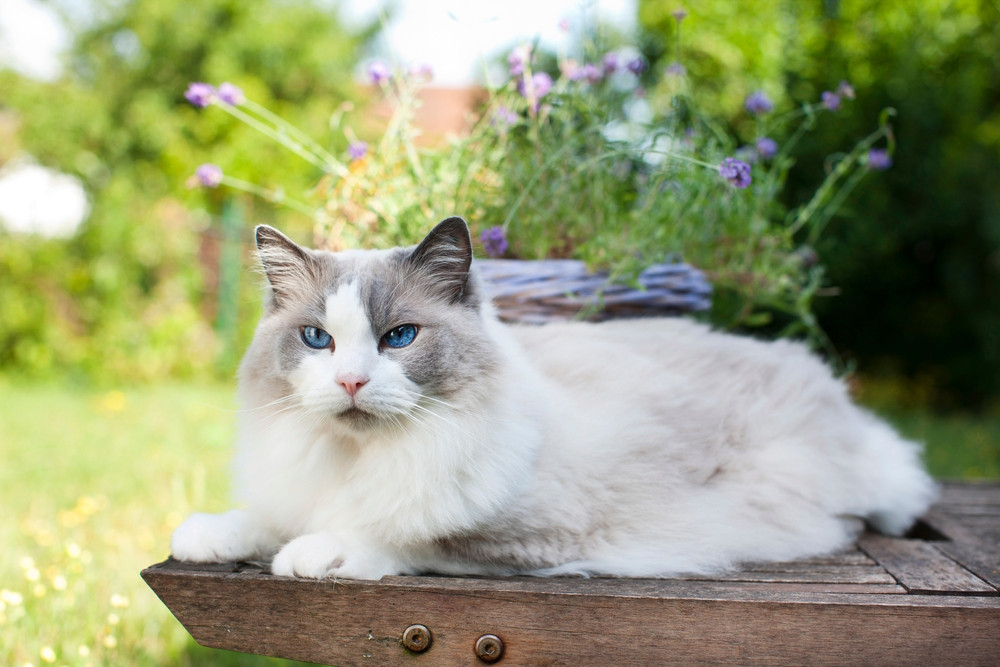Bringing greenery into your home can brighten your living space and boost your mood. Money trees, with their braided trunks and vibrant green leaves, are a popular choice for beginner plant enthusiasts. But for cat owners, the beauty of houseplants comes with an important question: is this plant safe for my feline friend?
The good news for cat lovers is that money trees are considered non-toxic to cats. You can breathe a sigh of relief knowing that this popular houseplant won’t pose a serious poisoning risk to your curious kitty. However, it’s not entirely a free pass. Let’s delve deeper into why cats might be interested in your money tree and what, if any, precautions you should take.
 divider 2 cats
divider 2 cats
Understanding Money Trees (Pachira Aquatica)
Money trees, scientifically known as Pachira aquatica, are tropical trees native to the swampy regions of Central and South America. These plants are admired for their distinctive appearance, featuring a braided trunk and lush, palmate leaves. Their resilience and easy-care nature make them a favorite for indoor gardening, adding a touch of the tropics to any home.
Are Money Trees Safe for Cats? The Good News for Pet Owners
If you’ve been searching for “Are Money Trees Poisonous To Cats?”, you can rest assured. Money trees are classified as non-toxic to cats by most reputable sources, including the ASPCA. This means that the sap, leaves, and trunk of the money tree do not contain substances that are inherently poisonous to felines. This is in contrast to many other popular houseplants that can cause serious health issues if ingested by pets.
Potential (Mild) Reactions if Cats Ingest Money Tree
While money trees aren’t poisonous to cats, it doesn’t mean they are entirely consequence-free if your cat decides to take a nibble. Just like with many non-toxic plants, consuming parts of a money tree can lead to mild gastrointestinal upset in some cats.
If your cat eats a significant amount of money tree leaves or stems, they might experience:
- Vomiting: Their stomach may reject the plant matter.
- Diarrhea: Changes in stool consistency can occur.
- Nausea: They may show signs of discomfort or loss of appetite.
These symptoms are usually mild and temporary, resolving on their own within a day or two. However, it’s always wise to monitor your cat if you suspect they’ve been munching on your money tree and contact your veterinarian if symptoms seem severe or persist.
Image Credit: cool2compute, Pixabay
Why Are Cats Attracted to Money Trees? Curiosity and Playfulness
Cats are naturally curious creatures, and houseplants can be fascinating objects in their environment. Money trees, in particular, might attract cats for a few reasons:
- Dangling Leaves: The playful, swaying leaves of a money tree can be irresistible to a cat’s hunting instincts, encouraging them to bat and play.
- Texture: The texture of the leaves or the trunk might be interesting for cats to chew or rub against.
- Boredom: If your cat is bored, they may turn to your houseplants for entertainment.
Providing your cat with plenty of interactive toys, scratching posts, and playtime can help redirect their attention away from your money tree and other houseplants.
 divider 1 paws
divider 1 paws
Identifying Plants That Are Actually Toxic to Cats: What to Watch For
While money trees are safe, it’s crucial to be aware that many other common houseplants are toxic to cats. Knowing the signs of potentially poisonous plants can help you make informed decisions about what you bring into your home.
Some indicators that a plant might be toxic include:
- Milky Sap: Plants that release a milky or colored sap when broken can often be irritants or toxic.
- Shiny Leaves: Leaves with an unnaturally glossy sheen can sometimes be a warning sign.
- Brightly Colored Berries: While attractive, berries, especially white or yellow ones, can be poisonous.
- Umbrella-Shaped Growth: Certain plant families with umbrella-like canopies are known for toxicity.
If you are ever unsure about a plant’s safety, err on the side of caution. Always consult a reliable plant toxicity database or your veterinarian before bringing a new plant into a cat-inhabited home.
Click to Speak With a Vet
Keeping Your Cat and Money Tree Cohabitating Peacefully: Practical Tips
Even though money trees are non-toxic, preventing your cat from turning them into a chew toy is beneficial for both your pet and your plant. Here are some strategies to keep your cat safe and your money tree intact:
- Elevated Placement: Place your money tree on a high shelf, plant stand, or hanging planter that is inaccessible to your cat.
- Citrus Deterrent: Cats dislike citrus scents. Placing citrus peels (like lemon or orange) around the base of the plant might discourage your cat from approaching. Be mindful that citrus oil can be irritating in high concentrations and potentially damage some plant surfaces, so use sparingly.
- Regular Trimming: Trim any dangling or easily accessible leaves that might tempt your cat to play or chew.
- Provide Alternatives: Ensure your cat has plenty of engaging toys and activities to prevent boredom-related plant exploration.
- Bitter Apple Spray: A pet-safe bitter apple spray can be applied to the leaves (test a small area first) to deter chewing with its unpleasant taste.
 Adult-ragdoll-cat-lying-relaxed-in-the-garden Photo Credit: absolutimages, Shutterstock
Adult-ragdoll-cat-lying-relaxed-in-the-garden Photo Credit: absolutimages, Shutterstock
Final Thoughts: Money Trees and Cats Can Coexist Safely
For cat owners seeking attractive and low-maintenance houseplants, the money tree is an excellent choice. Knowing that money trees are not poisonous to cats offers peace of mind. While you should still discourage your cat from making a meal out of your money tree to avoid potential mild stomach upset, you can relax knowing it won’t cause serious harm. By implementing a few preventative strategies, you can happily enjoy your money tree while keeping your feline companion safe and sound.
See Also:
Sources
Featured Image Credit: Negin Minaei, Shutterstock